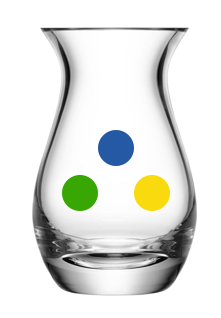Multinomial Distribution

An urn contains 1 blue, 1 green and 1 yellow ball. With replacement, we draw out a ball 7 times and record down the color seen. What is the probability that we see an equal number of blue and green balls?
The answer can be written as with and coprime positive integers. Submit .
The answer is 860.
This section requires Javascript.
You are seeing this because something didn't load right. We suggest you, (a) try
refreshing the page, (b) enabling javascript if it is disabled on your browser and,
finally, (c)
loading the
non-javascript version of this page
. We're sorry about the hassle.
The probability is: ( 3 1 ) 7 ⋅ ( 0 ! 0 ! 7 ! 7 ! + 1 ! 1 ! 5 ! 7 ! + 2 ! 2 ! 3 ! 7 ! + 3 ! 3 ! 1 ! 7 ! ) = = ( 3 1 ) 7 ⋅ ( 1 + 4 2 + 2 1 0 + 1 4 0 ) = ( 3 1 ) 7 ⋅ ( 3 9 3 ) = 7 2 9 1 3 1 = E D ⇒ D + E = 8 6 0